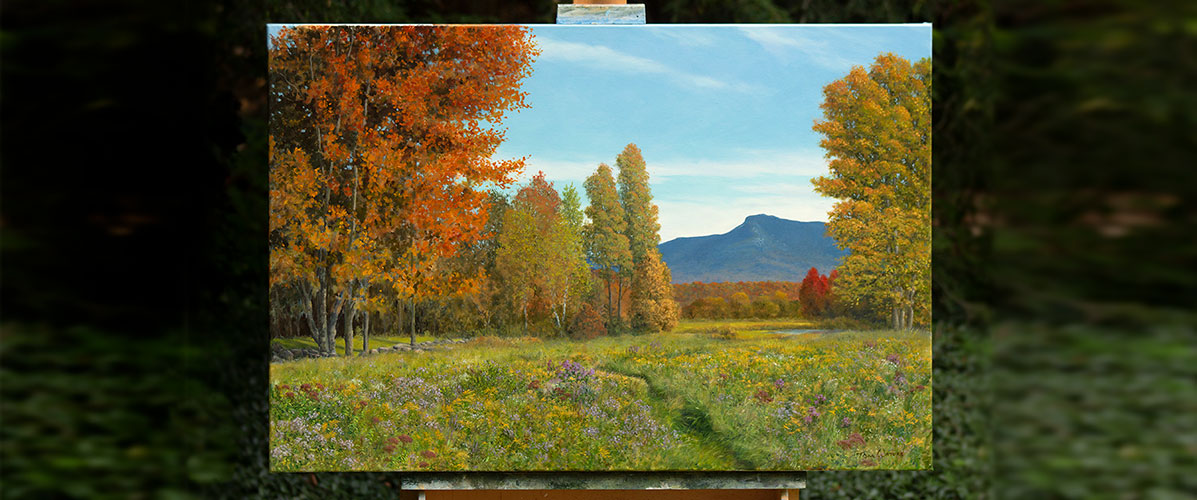No I am not talking about x-ray vision, although that would be cool. Instead I want to talk about how we see art and how to expand our own awareness and appreciation.
Like most people, my view and opinion of art is filtered through the lens of my experience. I have certain prejudices based on life experience, experience as an artist, and past exposure to art. When I first started painting I was heavily influenced by an early love of Claude Monet. Impressionism was my favorite form of art and many of the contemporary painters I was drawn to painted in a loose, impressionistic style. This bias was likely formed in my late teens and early twenties. I remember one of the first big museum shows I went to was at the Museum of Fine Arts in Boston and they were holding a Monet exhibit that included many of his Haystacks, Rouen Cathedral and other paintings. I found it fascinating and perplexing at the same time.
Many years later, long before I started painting again, I vacationed in France and was able to visit the Musee d’Orsay, Marmottan-Monet Museum, Le Orangerie, and others. Sitting in the room surrounded by Monet’s Water Lillies is quite an experience. Cézanne, Courbet, Sisley, Pissarro, Manet, Renoir, what could be better?
I have the luxury of working in a gallery 4 days a week. We change shows every couple of months, and so new work is coming in all the time. When I started working at the gallery I would easily gravitate to certain paintings, and overlook, or even look down upon, others. Never having gone to school for art I did not have a broad perspective or understanding of art, art history, and art appreciation. I suspect many people who go into galleries and museums have the same background, experiences, and prejudices.
How many people have scratched their heads and wondered why they can’t get a gallon of black paint, a big canvas, and paint a square like Kazimir Malevich, or the colored blocks of Mark Rothko, or paint drip “drop-cloths” of Jackson Pollock. And get rich! Where is the art?
I hear variations of this on a smaller scale all the time. “Oh I could paint that.”, “I don’t get it?”, “They want HOW much for that?” And worse.
Its easy to dismiss what doesn’t appeal to you. And its not just a lack of understanding, although understanding how, why, where and when an artist did certain paintings can certainly help with the understanding and appreciation of those artists and their works. But more often I find reactions to art are based on their immediate appeal, which is filtered through the viewers lens of art and life.
So, …finally, how can anyone learn to see art differently, and thus expand their appreciation and enjoyment of art they may currently find uninteresting or even offensive? Working at the gallery I found myself many times in conversations, or simply over-hearing conversations of others, who were interested in a painting I had previously not paid much notice. By listening to how they view the art, what appeals to them, what they notice, and how it makes them react, I could find new insights into the work itself. By asking questions I could get even more insight. Colors, brushwork, subject matter, composition, mood, detail, expressiveness, familiarity – all these things are open to interpretation. People love to talk about art they love. By listening to them, and engaging in conversation, I found myself editing my list of favorites, revisiting paintings I used to pass by, and appreciating many more styles of painting than I ever had before.
My wife has an Uncle that I was talking to one day. He had visited a show of, I think, Mark Rothko’s work and told me he never understood the allure of the paintings. So he set himself the task of actually sitting in front of each piece for a period of time and really looking at it. What he found surprised him. At first he did not notice subtle differences in color and tone, but as he sat there the subtle variations not only became noticeable, but they started to resonate with him. He found that there was an appeal, perhaps even an energy in the paintings that he could not find the words to describe. But it pleased him. By taking the time to actually look and consider the work, he walked away with a new appreciation.
So here is my challenge. If you are in a gallery or museum anyway, take a few extra minutes to look at some work you don’t like. Then ask someone, someone else admiring the work, or a gallery assistant, or anyone nearby to comment on the art. Do they like it? Why? What makes that piece worthy of being in that show. Then listen to others as you make your way around the space and stop to listen to what they are saying about works they like. If open to it, ask them questions. People love to talk about art they like. You might surprise yourself. Broadening your perspective on art feels good, empowering. It’s a little like having a superpower! Who needs x-ray vision anyway?

